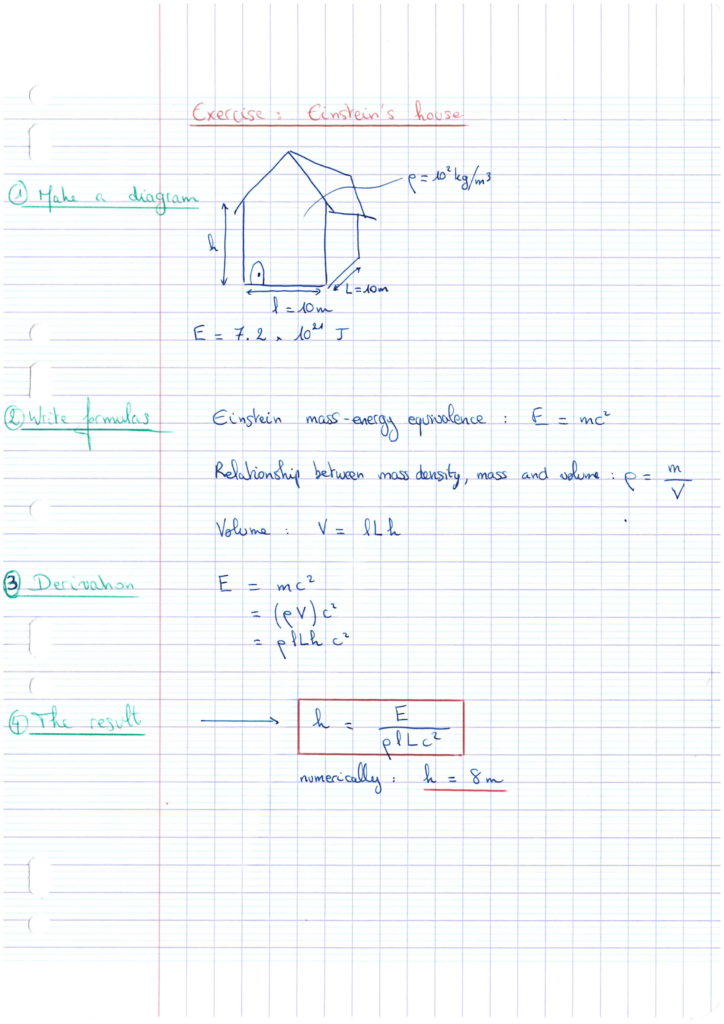“Ugh… , I don’t know where to start with this stupid exercise. What are they talking about? What do I do?”
Sounds familiar? =)
Let’s imagine an exercise (completely and unapologetically nonsensical, but its purpose is to illustrate something important) in which the goal is to determine the height of a parallelepipedic house assuming that we know:
Its rest mass energy is ![]() , its width is
, its width is ![]() , its depth is
, its depth is ![]() , and its mass density is
, and its mass density is ![]() .
.
What we’re going to do is solve this exercise by following a template that can be widely adapted to any exercise.

1) Make a diagram
First, let us draw a diagram. Thanks to this, we can introduce all the useful quantities without having to write long-winded sentences. As you can see, this is not about producing works of art.
2) Write formulas
Then, it is time to write formulas that everyone can agree on. These formulas should be as “first-principles” as possible. If they have a name, it is even better.
3) Derivation
Now, we go through the derivation step by step, without rushing ahead and taking the risk of introducing careless mistakes
4) The result
Once we get there, a good old red square around it is in order. We worked for it, so it needs a pretty, visible display. Note that by “getting there”, I mean writing an analytical formula.
Then, and only then, shall we plug in the numbers and see what comes out.
-There it is. Now you know how to solve any exercise!
-Uh…
-Well yes! For any exercise you may be faced with, you just need to
1) Make a diagram. You can draw at least as well as I can, right?
2) Find the right formula. A formula that you are really, really certain of, even if that means taking a few extra steps to get a more suitable formula.
3) Do the calculations, calmly, without rushing or getting upset.
4) Write down your result, first by clearly writing an analytical formula that only contains information you know
4bis) And only then, plug the numbers in.
Okay, that may not be quite enough to solve every exercise under the Sun without having to go to class again but having a template for solving physics exercises should allow you to avoid the panicky feeling that comes with the question “Where do I start?”: by drawing a diagram, then writing formulas you think are relevant, then… I’ll leave it to you.
Doing every exercise this way will also allow you to review your answers effectively since you will know where everything is. Exercises will also be easier to revisit later (like when you’re revising for your exams) or to explain to someone else.
In short, getting into the habit of following this template is good for your clarity of mind!
A last important point: doing this helps the person marking your exam papers. And that is something you really want to do. If you ever have the chance, take a look at the “official” solutions of an exam and where markers expect to give points. You will see how stupid and mechanical it is. And you will also see that there is actually a significant amount of leeway. Markers do their best to give points when the student seems to understand what is going on, but this is not always easy to do, and they can miss things, especially if the writing is messy. On the contrary, if your answers are neatly written and easy to follow, it is quite likely that your marker will feel more inclined to help you back.

